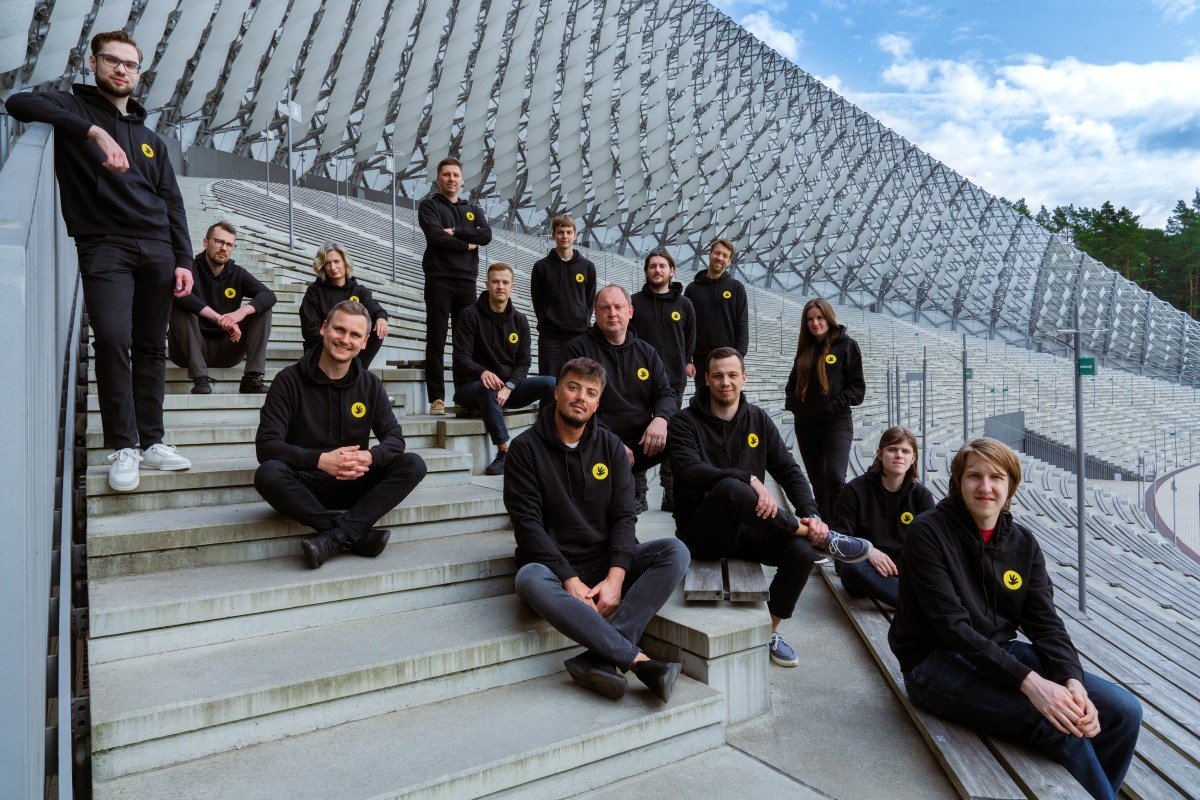Paying with a hand wave once sounded like science fiction, but contactless palm recognition service Amazon One has already been used more than 8 million times, according to the company. However, it is Amazon that explains why it has been implemented in Amazon stores and more than 500 Whole Foods Market stores in the United States, but only 150 third-party places.
Meanwhile, Fintech-Startups like Latvia’s hand-waving are on the field with the aim of giving third-party dealers a similar but independent solution to faster box while taking advantage of the giant’s role in popularizing biometric payments in the West. (China has already begun to adopt biometric palm payments where Tencent works to bring his Weixin Palm Pay Service in Mainstream use.)
Like Apple’s Facial ID, Palm scanning more than static images: it analyzes palm vein patterns and also verifies that the user is physically present when hovering their hand over the scanner. This method works for secure contactless payments and also applies to broader identity verification scenarios – with players like Keyo, who also support secure building access and other applications.
In contrast, Handwave focuses specifically on retail – and since it does not own stores like Amazon, it had to seek partners, which required to have a product. Three years in, and now with its own hardware and software, the Latvian start -up is preparing for market pilots who will implement its palm scanning devices in retail stores.
Dealers implementing the start -up technology would pay a transaction fee that hand waves requirements will be on par with or lower than standard payments. According to Handwave, faster and cheaper boxes could reduce costs. However, unlike some cost-saving measures, this solution is aimed at making things easier for customers-with the lifting of no cards, no apps, no fingerprint scanners and no facial scans for age verification and loyalty programs.
Handwaves Cofounders, CEO Janis Stirna and Sandis Osmanis-Usmanis, previously worked for one of the world’s largest global payment providers, Worldline. Despite this connection, the team aims to build a broad ecosystem. “Our plan is to cooperate with any financial institution or acquire bank,” Stirna told TechCrunch.
The start -up has only collaborated with a handful of financial institutions so far, “but very large, especially in Europe,” Stirna said. This summer, Start -up signed an agreement with Visa that could accelerate the implementation of Handwave’s solution in any country, according to its main income officer, Oskars Laksevics.
TechCrunch -event
San Francisco
|
27-29. October 2025
While Handwave also has the eyes on the US market, Laksevics believes it can be an advantage to start in the European Union – “the strictest market in the world” – and demonstrate compliance there before expanding.
Being an independent European player could also help the startup to keep an advantage if or when Amazon decides to more aggressively offer Amazon one to third party; Or if JP Morgan rolls his own Palm Payment experiment further out.
Start -up can also rely on other arguments, including pricing. After financial partners told Handwave that its devices should be able to compete for Price, the start -up developed its own hardware and algorithms, making them cheaper than others, Stirna said.
Being based in Riga also made it possible for the hand wave to operate with limited capital. The startup told TechCrunch that its R&D process was funded through bootstrapping, a $ 780,000 angel investment round and $ 267,000 in non-squity funding. This amount came from an EU-funded cyber security subsidy as well as support from Latvia’s LIAA Business Incubator and EU-supported accelerator Ready2scale.
As it gathers for its first pilots and receives regulatory certifications, Handwave has now secured a $ 4.2 million seed financing round led by Vilnius-based VC company Practica Capital with the participation of Firstpick and Outlast Fund, also from Lithuania; and inovo.vc, a Polish VC company that also operates in the Baltics.
The Baltic states have established themselves as a fintech hub, but also have scientific talent that is easier for a start -up such as Handwave to attract and be able to afford than in Silicon Valley -including AI engineers. “In Baltics, there are not many companies where you can get the extreme level of technical challenge to solve,” Stirna said.
As for Laksevics, who previously had a senior marketing role in Baltic Bank Luminor Bank, where Stirna had also worked, he told Techcrunch that he was drawn by the vision. “I left a very well -paid business job to participate in this one, and I really think we are building the next big global payment platform,” he said.
Handwave seems ready to put his best hand forward – but only time will show whether the market will grasp and whether biometric palm payments will really grab.
